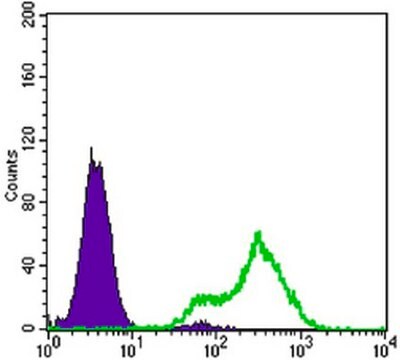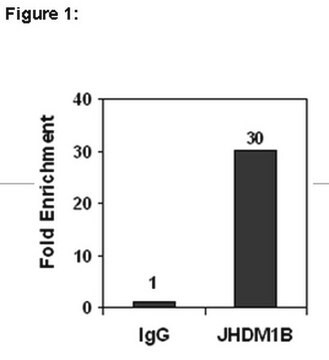MABF2070
Anti-Protein-tyrosine phosphatase eta (CD148) Antibody, clone 8A-1
clone 8A-1, from hamster(Syrian)
Sinonimo/i:
Receptor-type tyrosine-protein phosphatase eta, EC: 3.1.3.48, Protein-tyrosine phosphatase eta, R-PTP-eta, HPTP beta-like tyrosine phosphatase, Protein-tyrosine phosphatase receptor type J, R-PTP-J, Susceptibility to colon cancer 1, CD148
About This Item
Prodotti consigliati
Origine biologica
hamster (Syrian)
Livello qualitativo
Forma dell’anticorpo
purified antibody
Tipo di anticorpo
primary antibodies
Clone
8A-1, monoclonal
Reattività contro le specie
mouse
Confezionamento
antibody small pack of 25 μg
tecniche
flow cytometry: suitable
immunohistochemistry: suitable (paraffin)
western blot: suitable
N° accesso NCBI
N° accesso UniProt
Condizioni di spedizione
ambient
modifica post-traduzionali bersaglio
unmodified
Informazioni sul gene
mouse ... Ptprj(19271)
Descrizione generale
Specificità
Immunogeno
Applicazioni
Inflammation & Immunology
Immunohistochemistry Analysis: A representative lot detected Protein-tyrosine phosphatase eta (CD148) in Immunohistochemistry applications (Katsumoto, T.R., et. al. (2013). J Clin Invest. 123(5):2037-48).
Flow Cytometry Analysis: A representative lot detected Protein-tyrosine phosphatase eta (CD148) in Flow Cytometry applications (Stepanek, O., et. al. (2011). J Biol Chem. 286(25):22101-12; Lin, J., et. al. (2004). J Immunol. 173(4):2324-30).
Qualità
Immunohistochemistry Analysis: A 1:250 dilution of this antibody immunostained Protein-tyrosine phosphatase eta (CD148) in mouse spleen tissue sections.
Descrizione del bersaglio
Stato fisico
Stoccaggio e stabilità
Altre note
Esclusione di responsabilità
Non trovi il prodotto giusto?
Prova il nostro Motore di ricerca dei prodotti.
Codice della classe di stoccaggio
12 - Non Combustible Liquids
Classe di pericolosità dell'acqua (WGK)
WGK 1
Punto d’infiammabilità (°F)
does not flash
Punto d’infiammabilità (°C)
does not flash
Certificati d'analisi (COA)
Cerca il Certificati d'analisi (COA) digitando il numero di lotto/batch corrispondente. I numeri di lotto o di batch sono stampati sull'etichetta dei prodotti dopo la parola ‘Lotto’ o ‘Batch’.
Possiedi già questo prodotto?
I documenti relativi ai prodotti acquistati recentemente sono disponibili nell’Archivio dei documenti.
Il team dei nostri ricercatori vanta grande esperienza in tutte le aree della ricerca quali Life Science, scienza dei materiali, sintesi chimica, cromatografia, discipline analitiche, ecc..
Contatta l'Assistenza Tecnica.







